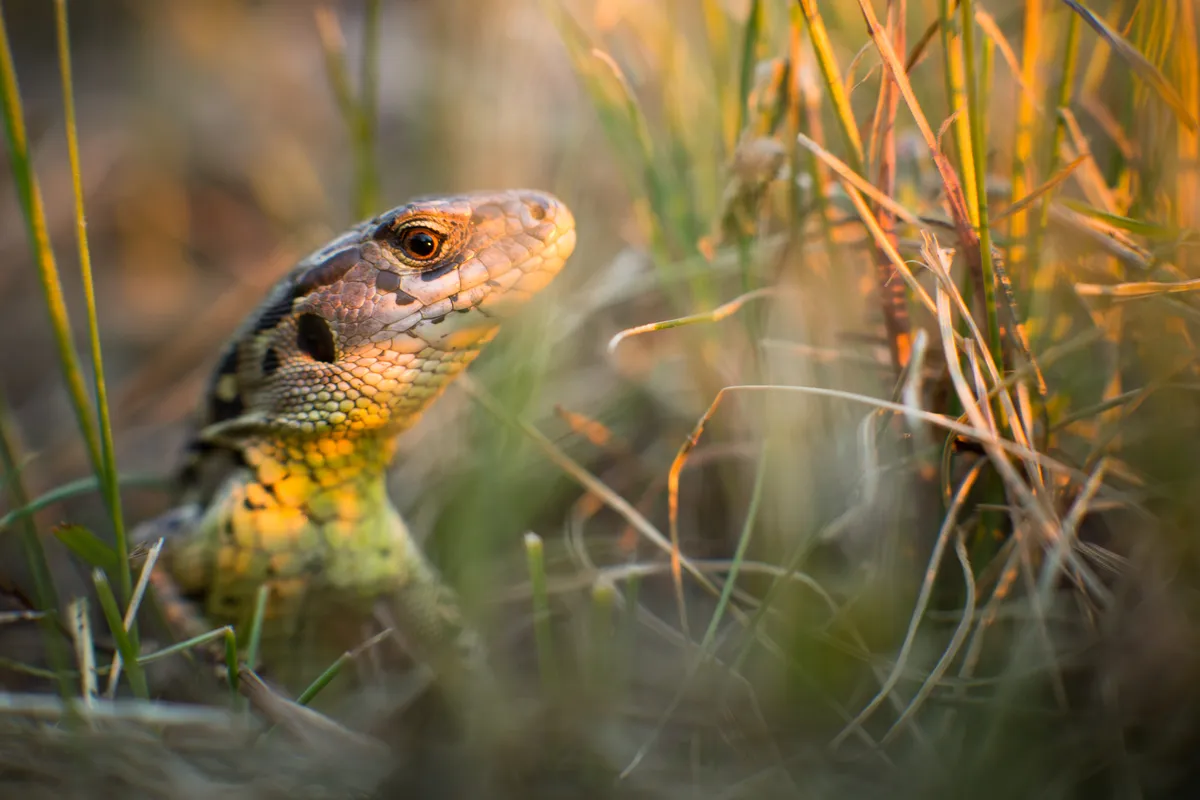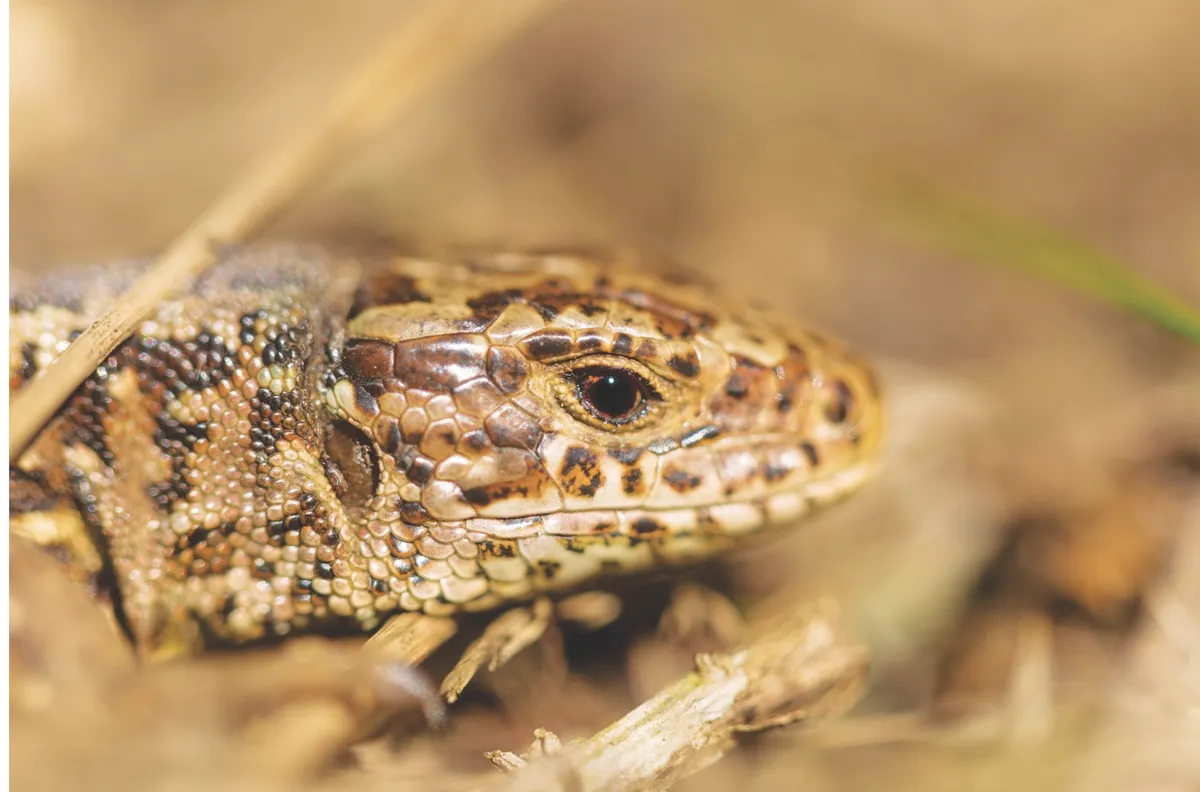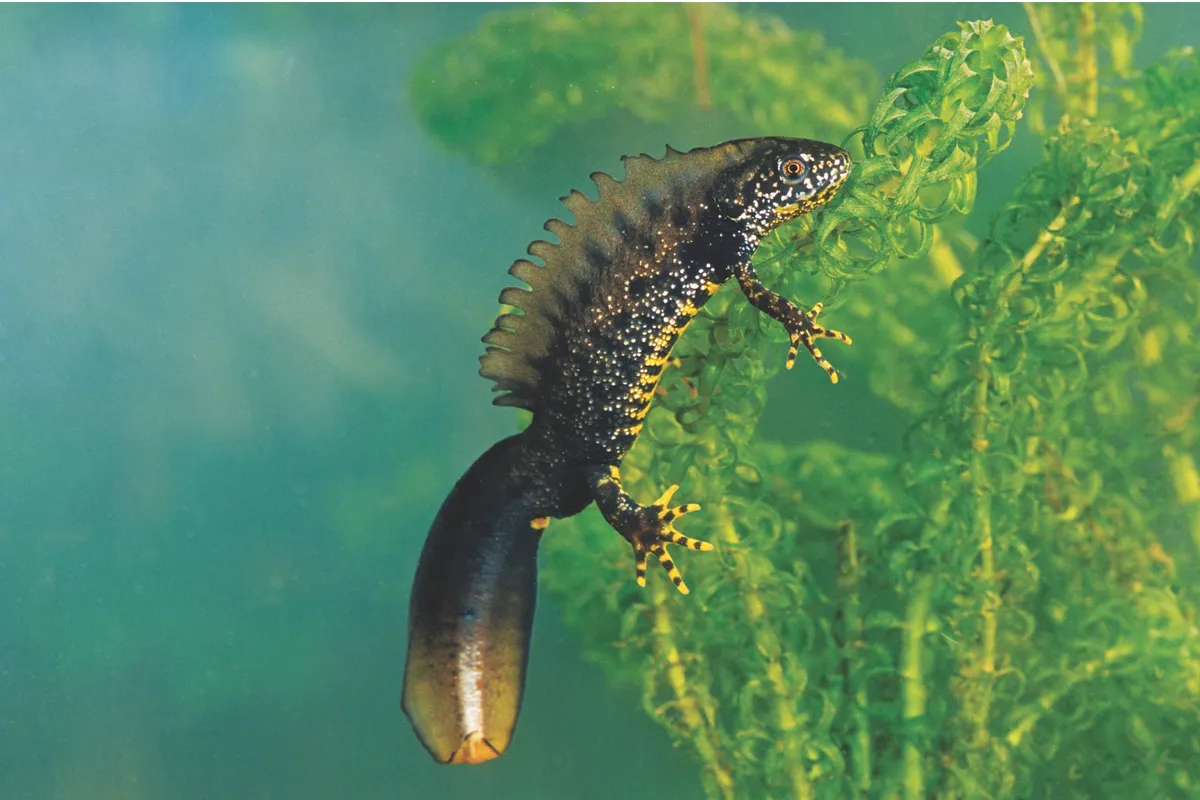The sand lizard is one of the rarest reptiles in the UK. Their scarcity means they are heavily protected, and it is an offence to knowingly disturb them.
Should you be in areas where sand lizards might be found then always remain on footpaths or public right of ways but keep an eye on south-facing banks or sandy mounds where lizards might be basking.
Watch out for disturbed sand which might be concealing eggs. These are laid in late May or early June and will hatch towards the end of August.
In this guide, we take a closer look at sand lizards in the UK, revealing information on how to identify them, where they live and what they eat.
Interested in learning more about British wildlife? Check out our guides to snakes, frogs and toads, and deer.
Reptiles of the British Isles
Discover the fascinating world of snakes, lizards and slow worms with BBC Countryfile Magazine's guide to Britain's six native reptiles.

What is a sand lizard?
Slightly larger and stockier than the common lizard, an adult sand lizard – Lacerta agilis – might measure 20cm from nose to tail tip.
Both sexes are strongly marked, with a mixture of stripes and spots in brown and grey. The males have green flanks which intensify in colour during the breeding season, giving an unmistakable and vivid beauty. This can also make them easier to spot, but care should always be taken.

Sand lizard habitat
Sand lizards favour heathlands and coastal sand dunes. They dig burrows into the sand in which to lay their eggs, the warmth of the sun-kissed substrate providing steady temperatures for incubation.
Sand lizard distribution
The rarest of our three native lizards, the natural range of the sand lizard has been restricted to the heaths of Dorset, Hampshire and Surrey and the coastal sand dunes to the north of Merseyside.
Do you know your amphibians?
What is an amphibian? Where do they live? And what species can be found in Britain?

Sand lizard diet
Sand lizards eat insects, slugs and spiders, as well as fruit and flowers.
Sand lizard protection and conservation
Efforts by conservation bodies such as the Amphibian and Reptile Conservation Trust (ARC) have seen a reintroduction programme across parts of the sand lizard’s original range. Populations have now been established at protected sites in north and west Wales, Kent, west Sussex, Devon and Cornwall.
Multi-organisational projects such as ‘Gems in the Dunes’ at Sefton are also ongoing with the aim of habitat management and public information. There may be opportunities for guided walks or work parties, so visit the ARC website or keep an eye on local press for further details.
